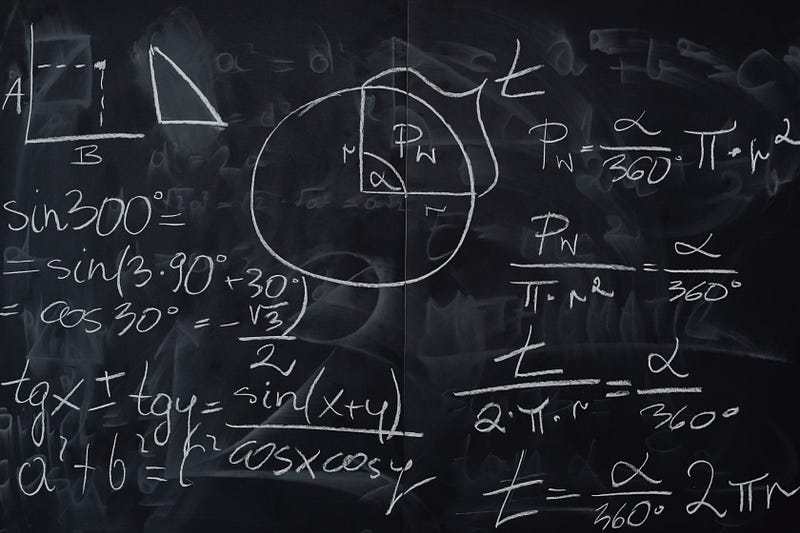The Elusive Quest for a True “Theory of Everything”
Written on
Chapter 1: Understanding Reality's Complexity
The belief that physics offers us absolute truths about reality is a common one. Many hold that we are gradually uncovering the universe's mysteries and inching closer to a comprehensive “Theory of Everything” that accurately depicts all aspects of reality. However, this optimistic view lacks any solid foundation. There can never be an objective description of reality at its core.
To grasp this idea, we must first consider language—the medium through which we share our knowledge. Human language is inherently metaphorical and subjective. No statement exists that is untouched by personal bias or contextual factors, which themselves are steeped in additional metaphors. For example, if I say, “Donald Trump is quite intelligent!” the reader must discern whether I’m speaking earnestly or sarcastically. The interpretation hinges on the reader's biases and perceptions of the speaker. Even poetic expressions, like “Hope is the thing with feathers,” evoke distinct images depending on the reader's perspective.
While the language used in modern physics strives for objectivity, it ultimately remains subjective. A claim such as “all the information about a particle is encoded in its wave function” cannot be validated or invalidated without venturing into metaphorical interpretations. Physicists can reduce some ambiguity by using clarifying language, but as long as they rely on words, the potential for further interpretation always exists. Although we can strive for objectivity by detailing experimental observations, even these descriptions can introduce rhetorical uncertainties.
Mathematics appears to be the only language devoid of subjectivity, suggesting it might be the key to crafting objective physical statements. However, complications arise when we attempt to ascribe meaning to mathematical expressions and relate them to the phenomena they describe. Take Schrödinger’s equation, for instance. While it represents an objective statement due to its well-defined mathematical structure, attributing meaning—such as linking it to quantum probabilities or a particle’s wave function—reintroduces subjectivity. This challenge in ascribing meaning to mathematics led Albert Einstein to assert that “as far as the laws of mathematics refer to reality, they are not certain; and as far as they are certain, they do not refer to reality.”

Chapter 2: The Ideal of a Unified Theory
A “Theory of Everything” must navigate the delicate balance between abstract mathematical principles and metaphorical narratives. To completely and accurately characterize the universe without resorting to metaphor, one would need to formulate a comprehensive equation that captures all ambiguities, recreating the universe solely through mathematical law.
Some may find this concept plausible, believing our universe could be an intricate computer simulation. Notably, Neil deGrasse Tyson has suggested this possibility. The idea of existing in a “Matrix-like” environment has gained traction due to rapid technological advancements and our unwavering faith in scientific progress.
However, I am less optimistic about this notion. We have ample reasons to consider the universe as infinitely vast, complex, and eternal. Yet, even if these assertions were untrue, no computer or simulation could effectively run the universe's “code,” nor could any mind comprehend it. A computer existing within the universe can never possess more processing capacity than the reality it inhabits. Even with infinite computational power, we would still face the challenge of creating a code that can mirror the universe's intricate complexity.
This video discusses the limitations of scientific theories and the notion that some cannot be definitively proven true.
In this video, Brian Keating and Curt Jaimungal explore the quest for a unifying theory in physics.
The notion of a simulation within a larger simulation must inherently be less complex than the encompassing structure. Yet, the issue extends beyond mere complexity. Complexity might be surmountable over an infinite timeframe, but the universe's essence is fundamentally incompatible with human understanding.
Human cognition is inherently dichotomous. Concepts like hot and cold, or black and white, rely on oppositional relationships. Just as computers utilize binary systems of ones and zeros, our brains also process information in binary states. This duality limits our ability to conceive of a language or understanding system that exists beyond dichotomies; a non-binary language would essentially be infinite homonyms.
At a fundamental level, reality does not abide by the black-and-white dichotomies that we rely on for understanding. We are conditioned to perceive a stark distinction between space and matter. Space is often imagined as a void filled with scattered particles, yet this view is fundamentally flawed.
General Relativity teaches us that space is not merely a vacuum; it is a dynamic, energetic field that mediates gravitational forces. Quantum physics reveals that matter does not consist of discrete particles moving through empty space; rather, it is diffused throughout space, behaving in accordance with enigmatic wave properties. Particles cannot be precisely located as singular entities.
The “objects” we understand as “matter” are not simply isolated entities but are fluctuations within an omnipresent field. There is no essential difference between space and matter, which means we lack a fundamental dichotomy to dissect and fully comprehend our universe.
Consider the electron: often described as a “point particle” or “discreet energy packet.” What does this truly signify? We can envision it either as an intangible entity or as a minuscule bundle of energy. Regardless, a perfect microscope would reveal nothing solid—only “energy” or “empty space,” both of which are abstract concepts. This applies equally to protons and neutrons, the so-called “elementary particles” of atomic nuclei. It has been established that protons and neutrons themselves consist of quarks, forming a structure akin to atoms.

The trend suggests that quarks are also primarily composed of empty space, possibly interspersed with smaller “more elementary” particles yet to be identified. This pattern implies that within these “more elementary” entities, the same principle applies: they are largely void, with smaller particles scattered throughout, and this recursion continues infinitely. There is no basis to believe we will ever uncover a fundamental unit of matter. Regardless of advancements in technology, physicists must eventually confront the reality that matter and energy are not confined to indivisible particles but are distributed throughout the universe. The idea of a fundamental particle is a myth, just as is the concept of empty space.
A well-known koan poses the question: “You can make the sound of two hands clapping. Now what is the sound of one hand?” If matter is not composed of discrete particles traversing through “empty space,” then this realization reinforces our understanding that the universe, at its core, eludes human comprehension.
The notion of the universe's “oneness” is something our duality-based minds struggle to grasp meaningfully. Even if we possessed an ideal supercomputer—an intellect capable of processing more information than there are “particles” in the universe—it would still fail to accurately depict our reality due to that perplexing oneness.
We understand that reality is not a void; it is not a “0.” It is also not a uniform “something”; it is not a “1.” It transcends the binary notion of something and nothing, residing in a state that logical frameworks will never adequately capture.
As another famous koan reminds us: between “is” and “is not” lies the domain of the enlightened.